The girls were excited to hear that learning how to make batik from a Bai family was on the itinerary. They had spent an enjoyable afternoon making hot-wax batik during our Christmas vacation in Bali.
| We were all curious to learn what distinguishes the Balinese method from the Bai, as we had seen lots of batiks hanging up for sale in Dali’s old town. | 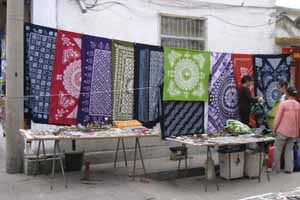 |
Huang took us to the village of Zhoucheng outside of Dali, where a family named Yang has been making batik for three generations in a home-based workshop.
| Moving into the quiet back courtyard, we saw piles of the factory's output lying around on the gravel floor and soaking in big plastic tubs. | 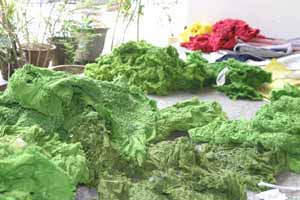 |
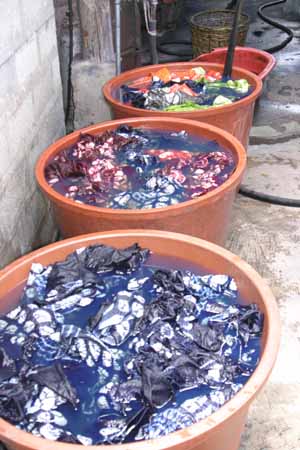 |
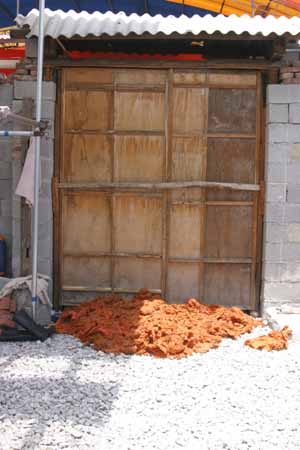 |
 |
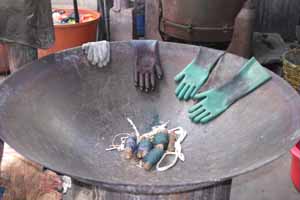 |
Why gravel? We would soon find out.
Huang introduced us to the workshop’s proprietor, Ms. Yang (one of the most common Bai surnames).
Her colorful, traditional headdress matched the colors surrounding us in the courtyard. When we arrived, she was in the middle of tracing a pattern on a piece of white material that would later be stitched and dyed. |
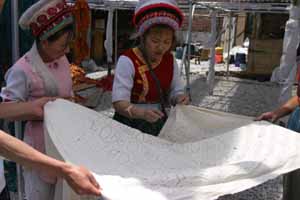 |
She immediately let the girls pitch in, showing them how to brush on the dye through a tracer.
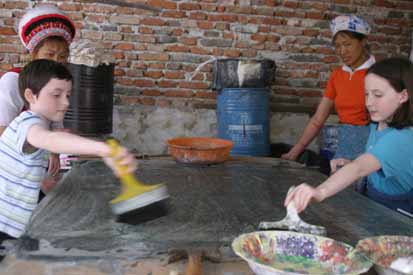 |
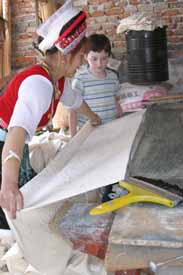 |
Stitching is the next step – and it looked hard!
| Ms. Yang had to gather up many tucks of the stiff material. It was obviously difficult even for someone with years of experience to push a needle through the many folds. | 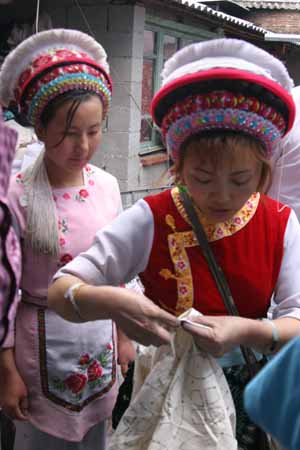 |
| She let us feel her hands – tough with scars from the needle and stained from dye. | 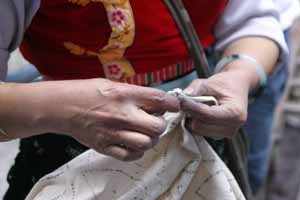 |
The source of the stains: huge vats of indigo.
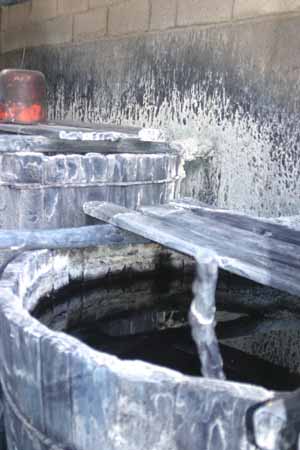 |
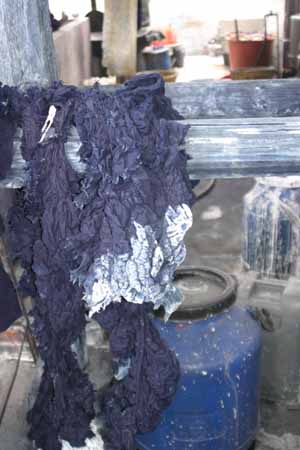 |
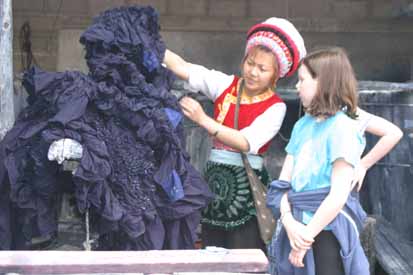 |
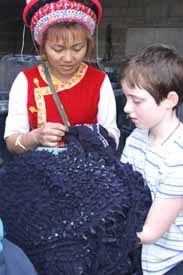 |
Each piece of fabric is dyed multiple times to produce deep, vivid colors. The dark blue pieces are immersed a total of 24 times!
Since the dyeing would take too long for our visit, Ms. Yang showed us the post-dyeing step, which involves tearing out all of the stitches from the dyed material. On this particular day, armloads of orange sheets were waiting to be unstitched.
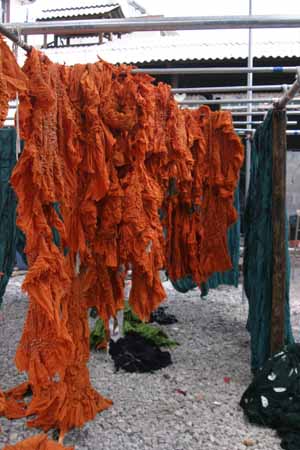 |
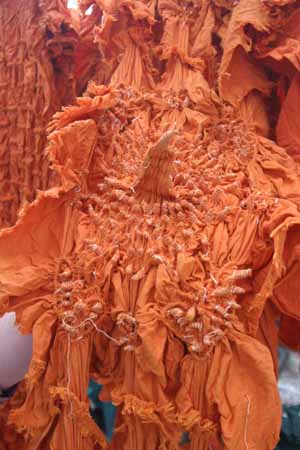 |
Under Ms. Yang’s guidance, the girls and Tom enthusiastically started ripping. Fortunately this task requires neither technical aptitude nor training!
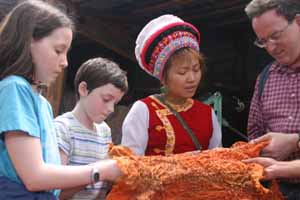 |
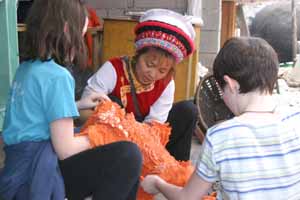 |
The girls found this repetitive task so absorbing that we left them for a few minutes to follow the whine of a nearby motor.
| In another courtyard room, Tom and I came upon Ms. Yang’s husband, who was dyeing huge bolts of fabric using much more modern methods. | 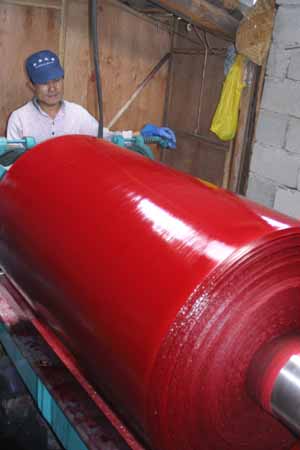 |
| In addition to the hand-crafted tie-dyed material, the family also sells bolts of vivid cloth, used as a base for the rich embroideries favored by the Bai and other local minority cultures. | 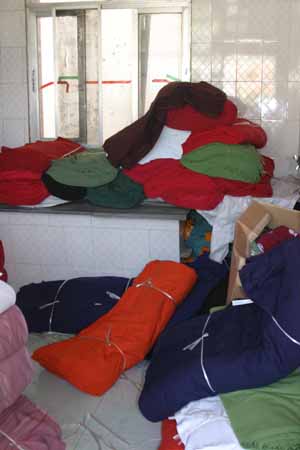 |
When we came back to the main courtyard, the girls were still ripping away – but starting to feel the effects of the thread on their non-callused hands.
Meanwhile, Ms. Yang was hanging out to dry some sheets that had been washed in a solution that sets the colors. In just a few minutes, the courtyard, bare when we arrived, was festooned with color, like a fairground. |
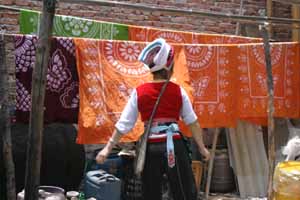 |
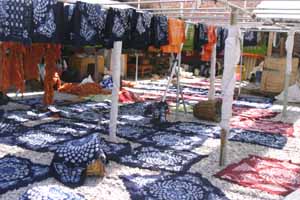 |
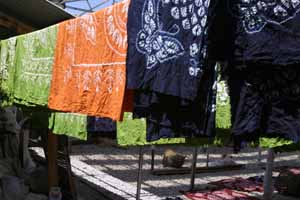 |
Now we understood the reason for the gravel, which acted as natural drainage.
| Ms. Yang stopped work for a minute to check in with one of her piece-workers, a Bai woman who had taken home an armload of white material to be stitched, along with some dark-blue sheets that she had unstitched, washed and dried. | 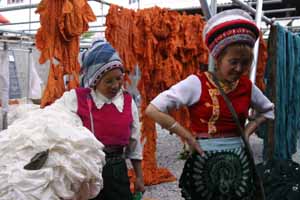 |
The visitor was amused to watch the two foreign kids ripping out stitches industriously, but quickly got down to business with Ms. Yang, who keeps a notebook for each piece-worker in which she notes down what they deliver and what she pays.
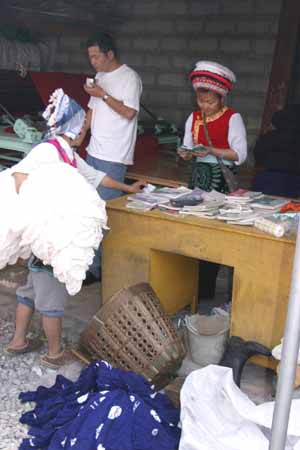 |
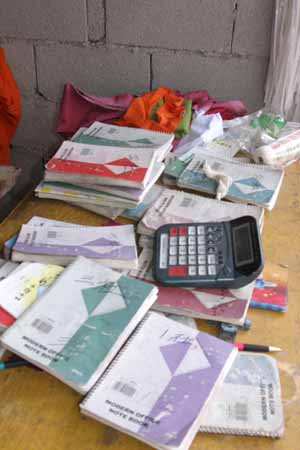 |
After almost an hour of ripping, the two girls had completely unstitched ONE piece of batik! Assisted by Huang and Ms. Yang, they displayed it proudly.
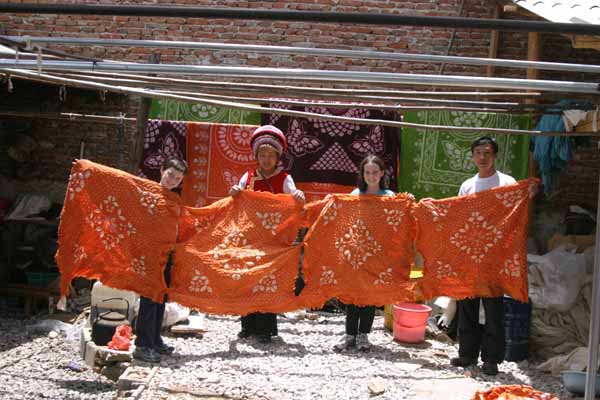
After watching much of the labor-intensive process, the amount of time each piece required was staggering to us – clearly, many hours.
| We saw the fruits of the workshop’s hard labors in an upstairs “boutique” piled high with finished products. | 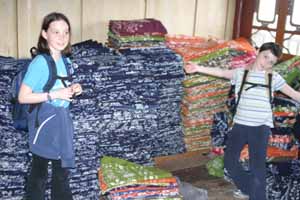 |
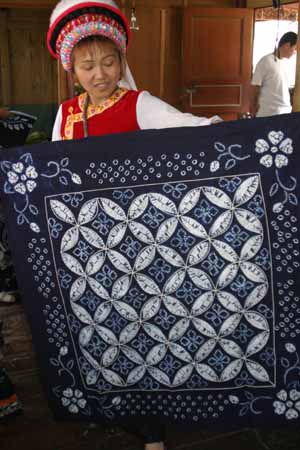 |
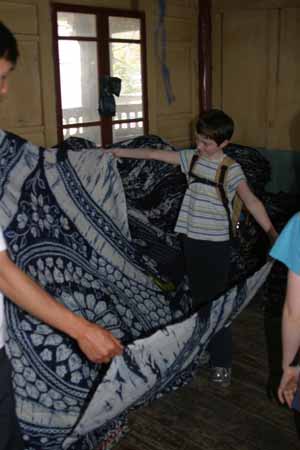 |
Many are sold abroad; Japanese especially favor the simple prints on the dark-blue background as material for cotton “farmer’s pants” and yukatas, those ubiquitous bathrobes. We unfolded piece after piece, getting glimpses of literally hundreds of patterns, before deciding on several that will serve as tablecloths in our new house. The girls picked out a stack of colorful bandanas for themselves and their friends back home.
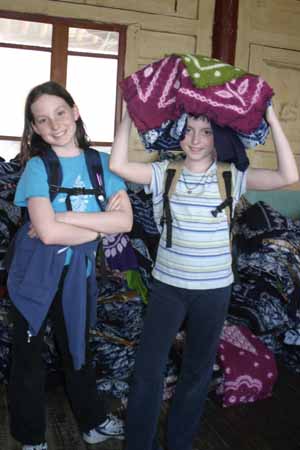 |
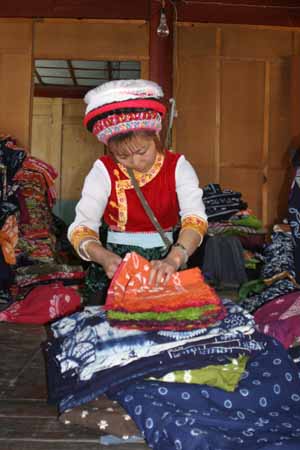 |
Tom scored another find after asking Ms. Yang where he could buy a Bai-style hat.
She returned with two kinds, traditionally worn by a bride and a groom. For fun, we slapped two of the groom’s hats on the heads of Huang (on the right) and our faithful driver, Liu. |
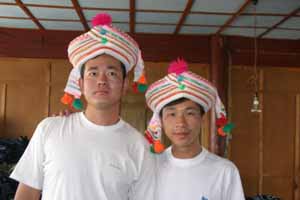 |
The girls modeled them for us later on in the courtyard. Now we have tribal headgear, Yunnan style! |
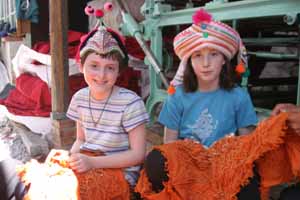 |
Next: Tacky Tea